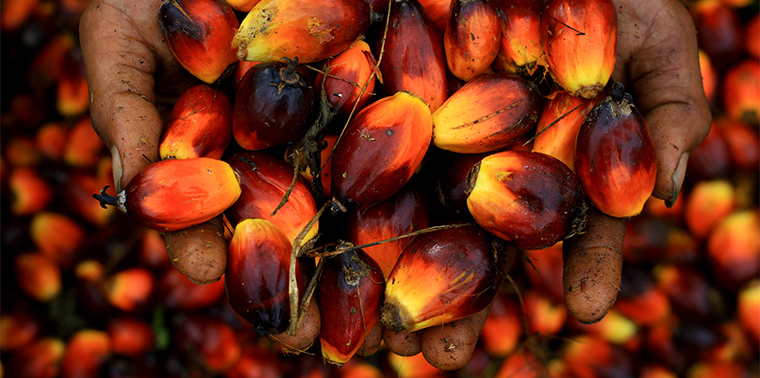December 23, 2014 — Like most things in life, environmental issues live in a gray world, even if we often try to put them in black-and-white boxes. This reality prompted us to do something with a few stories in the second half of 2014: Take a 35,000-foot view of issues for which many people have either already made up their minds or the story has been fragmented to a point where people have missed the forest for the trees.
These efforts seemed to resonate with readers. Take our recent story on solutions to the palm oil problem — a complicated issue often presented as anything but. Rather than beginning from the negative point of view of palm oil that is so often the default starting point for other stories, environmental journalist Michael Kodas chose to look at why it’s so widely used and what can be done to fix the huge issues associated with it. The story quickly became one of our most-read stories of all time, and was picked up by Quartz and other outlets. In another story, we saw water expert Cynthia Barnett shine a light on the meta-issue lurking behind all the water stories of 2014, including quality issues in Ohio and water infrastructure issues in California: dysfunctional water pricing. Similarly, author Edward Struzik looked in detail at all the things we’ve been hearing about the Arctic over the last decade, painting an intense picture of a new future at the top of the world.
Other stories in the top 10 looked at controversial issues, such as GMOs and the environmental impacts of eating meat. And we dove headfirst into environmental health stories with pieces by journalist Elizabeth Grossman on why certain chemicals are banned in Europe and not in the U.S., and the possible dangers lurking in food packaging.
As always, our focus was not only on the problems we face, but also on possible ways to address those problems. This is at the core of our reporting, and we saw readers responding positively.
So, here are our 10 most popular stories for 2014:
1: How did palm oil become such a problem — and what can we do about it?
This piece not only looks at the major environmental issues surrounding palm oil, but also asks how and why the ubiquitous oil came into such prominence and what we can realistically do to minimize its negative effects moving forward.
2: The end and the beginning of the Arctic
We’ve been hearing a lot about the changing Arctic for years now, but in this feature explorer and author Edward Struzik brings all the various pieces together, creating a magnum opus about the new world emerging in the north — and why it should matter to you.
3: Hey America: It’s time to talk about the price of water
In 2014, there were countless stories about what the algae in Lake Erie were doing to Ohioans’ drinking water, what the drought in California was doing to all of that state’s water, and other water issues in a changing world. Author Cynthia Barnett looks at an issue at the heart of all those stories — the fact that water is the world’s most undervalued resource — and brings readers an entirely new and hugely important piece.
4: GMOs, silver bullets and the trap of reductionist thinking
Jonathan Foley, director of the California Academy of Sciences, writes in the opening lines of this piece: “Against my better judgment, I’m dipping my toe into the genetically modified organism debate.” Ensia readers are lucky he made that choice, because what follows became the most discussed story on our site, with comments beginning the day the piece was published in February and continuing all year.
5: Banned in Europe, safe in the U.S.
This piece by journalist Elizabeth Grossman hit home with readers who probably had the same question in their minds that we had in ours when we assigned the story: “Who determines whether chemicals are safe — and why do different governments come up with such different answers?” Exploring in depth the reasons some chemical products are allowed to be used in the U.S. even though other countries have decided they present unacceptable risks of harm to the environment or human health, Grossman offers a new and compelling perspective on the risks associated with the huge number of chemicals in use all around us.
Insects, “test-tube” burgers and fake meat that induces vegetable proteins to combine like muscle proteins … journalist Rowan Jacobsen’s story about meat alternatives captured the imagination of Ensia readers. Through a driving narrative, Jacobsen shows why it’s so important to consider these and other meat alternatives as we try to mitigate the environmental degradation modern agricultural practices can wreak on the planet.
7: New life for the artificial leaf?
In this piece, energy writer Phil McKenna looks at the starts and stops in the short history of the pursuit of artificial photosynthesis, a technology that has the potential to revolutionize energy production. Despite a bumpy road, the technology seems to be on an upward trajectory.
8: How do you solve a problem like food waste?
Food waste got a lot of attention in 2014, but most stories just pointed out that one-third of the food produced around the world is wasted or lost. While this piece also starts there, journalist Mary Catherine O’Connor takes the story a step further, looking at a number of technologies currently being used to address the problem and leaving readers with tangible examples of solutions in action.
9: What does a sustainable future actually look like?
Early in 2014 Ensia director Todd Reubold decided it was time to talk specifics around sustainability. “Building a sustainable future,” he put forth, doesn’t actually tell us a whole lot. He wanted to know “what sustainability actually looks like in practice.” Putting his money where his mouth is, he begins the discussion with four specifics of his own.
10: When it comes to food packaging, what we don’t know could hurt us
We spend a lot of time considering and worrying about the food we put in our bodies — but a lot less on the things into which we put our food. With her second story in 2014’s top 10, author Elizabeth Grossman dives into the disturbing questions raised by recent analyses about the health and environmental effects of the stuff that encases our edibles and explores the potential for a better path forward. ![]()
Ensia shares solutions-focused stories free of charge through our online magazine and partner media. That means audiences around the world have ready access to stories that can — and do — help them shape a better future. If you value our work, please show your support today.
Yes, I'll support Ensia!




